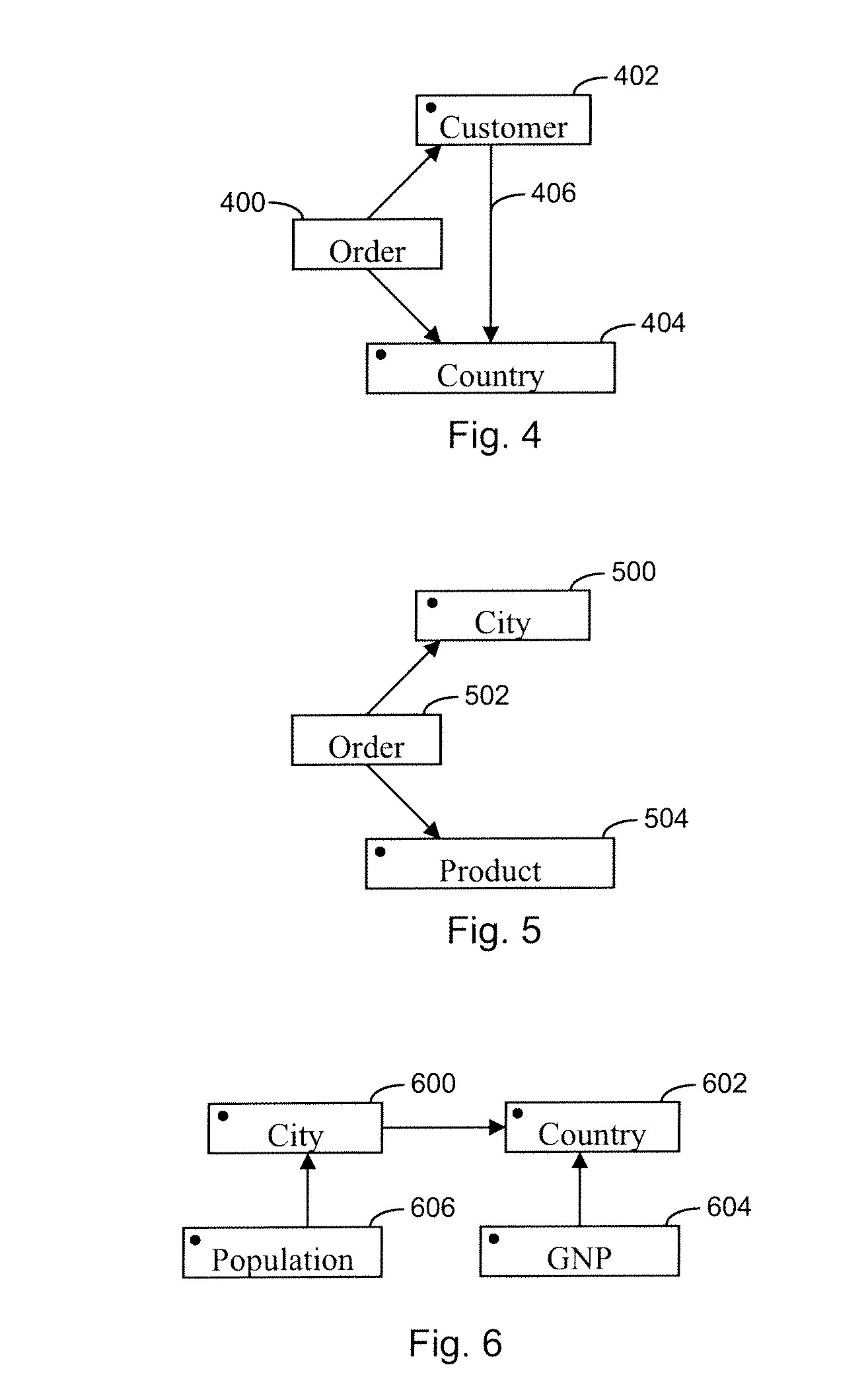Apparatus and Method for Processing Queries Using Oriented Query Paths
a query path and oriented technology, applied in the field of database information processing, can solve the problems of complex mechanisms, high maintenance costs, and many paths currently generated that do not make sense,
- Summary
- Abstract
- Description
- Claims
- Application Information
AI Technical Summary
Problems solved by technology
Method used
Image
Examples
Embodiment Construction
[0032]The invention reduces the number of query paths considered during the analysis of a database query by leveraging the functional dependencies expressed by oriented joins. The invention focuses on the issue of determining more accurate query semantics that take oriented information into account when it is available and can be trusted. Instead of considering tables and joins as defining a non-directed graph, as is the case today, tables and joins are now abstracted into a directed graph, whose edges—that represent the joins—are oriented. An edge goes from table A to table B if a join between A and B has cardinality “many A to one B”.
[0033]FIG. 1 represents a logical database model abstracted into a directed graph 100. The database model includes sales 102, city 104, product 106 and country 108 objects. The vertices (boxes 102, 104, 106 and 108) represent tables (including aliases or virtual tables) from an entity relation model. Vertices 102 and 108 are involved in the query. Thr...
PUM
 Login to View More
Login to View More Abstract
Description
Claims
Application Information
 Login to View More
Login to View More - R&D
- Intellectual Property
- Life Sciences
- Materials
- Tech Scout
- Unparalleled Data Quality
- Higher Quality Content
- 60% Fewer Hallucinations
Browse by: Latest US Patents, China's latest patents, Technical Efficacy Thesaurus, Application Domain, Technology Topic, Popular Technical Reports.
© 2025 PatSnap. All rights reserved.Legal|Privacy policy|Modern Slavery Act Transparency Statement|Sitemap|About US| Contact US: help@patsnap.com



